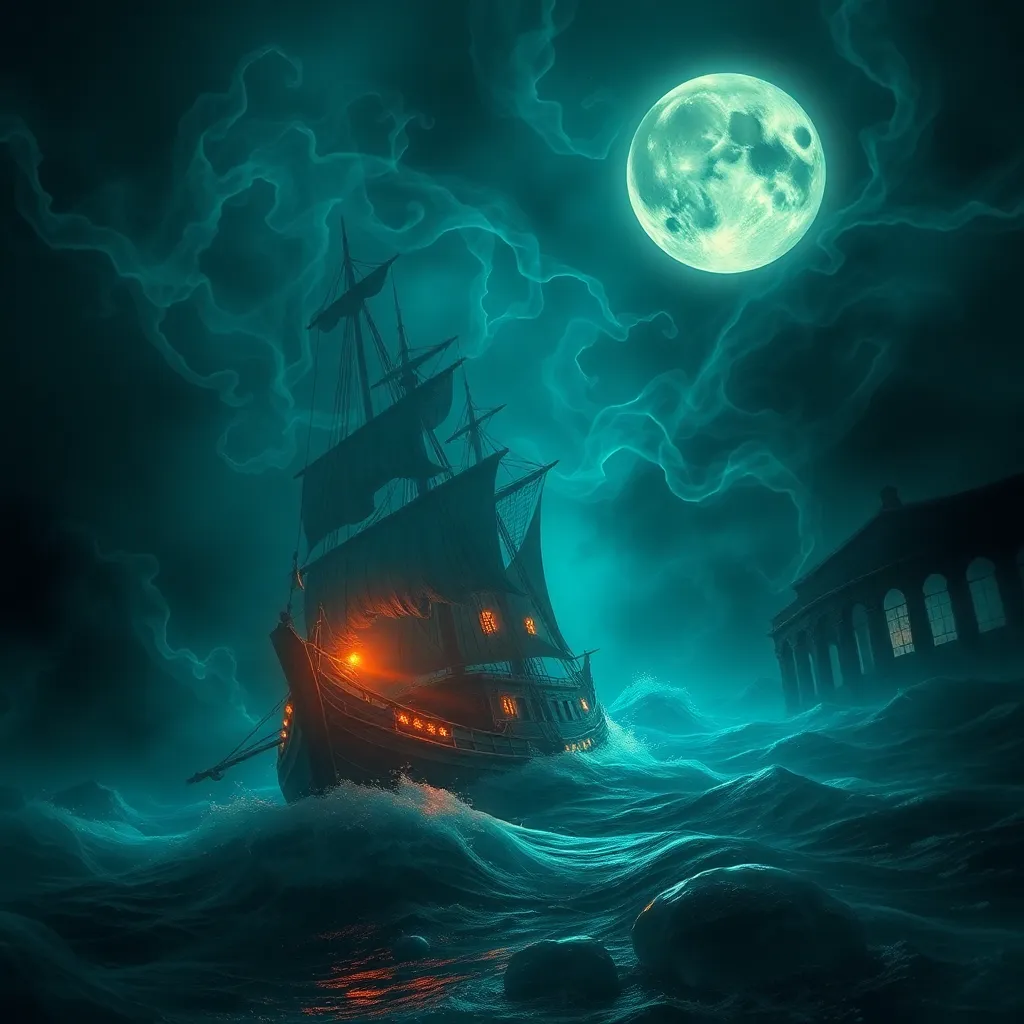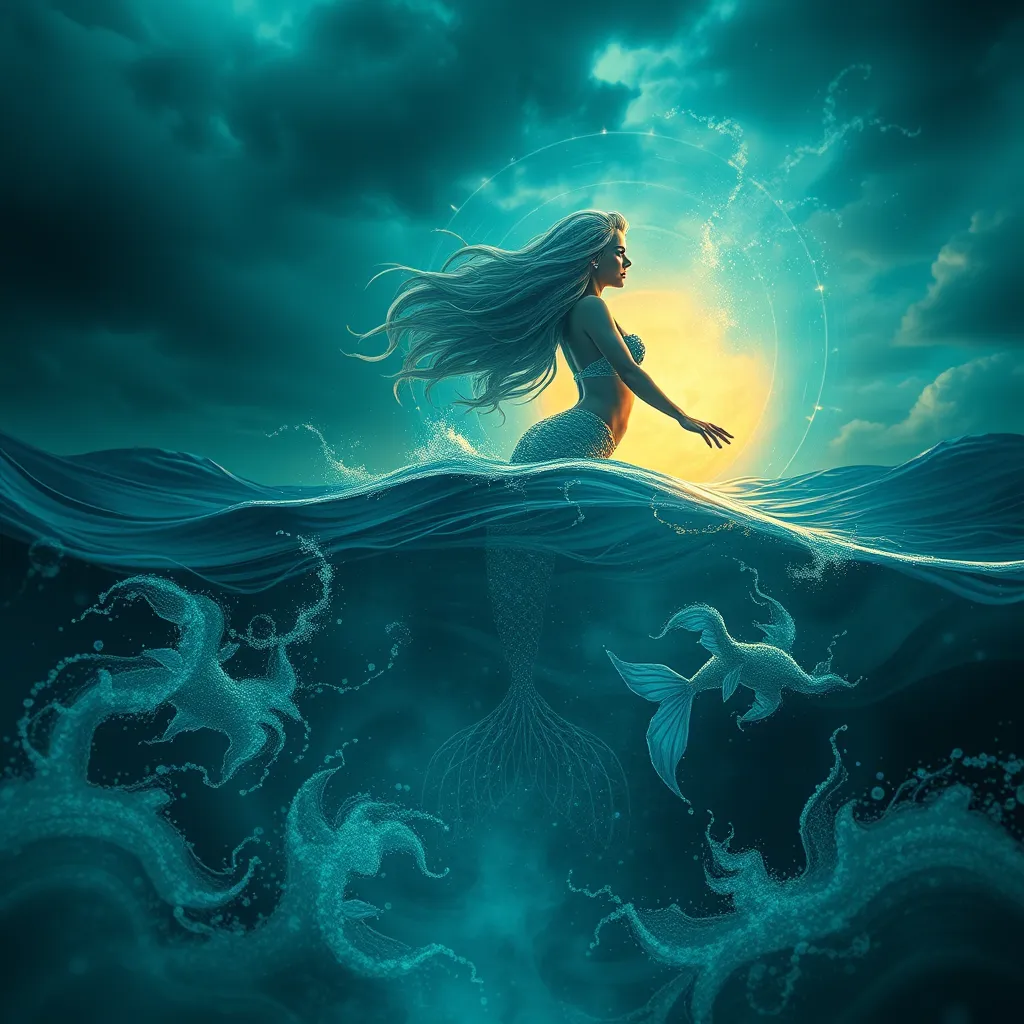The Ghosts of the Haunted Seas: Exploring the Legends and Mysteries
I. Introduction to Maritime Legends
The vastness of the ocean has always been a source of mystery and intrigue. Among the waves and tides lie stories of ghostly apparitions and eerie encounters that have captivated the imaginations of sailors and landlubbers alike. From spectral ships to phantom crews, these tales are woven into the fabric of maritime culture.
Folklore serves as a vital component of maritime heritage, offering insight into the fears, hopes, and beliefs of those who navigate the unpredictable seas. This article aims to explore the various legends and mysteries surrounding the haunted waters, examining their historical context, famous ghost ships, cultural interpretations, and the psychological factors at play.
II. Historical Context of Haunted Seas
Maritime history is rich with beliefs and superstitions that date back to ancient times. Sailors often relied on these stories to explain the unexplainable, filling the void of knowledge with narratives that provided both caution and comfort.
A. Ancient maritime beliefs and superstitions
Many ancient cultures held strong beliefs about the sea’s supernatural elements. For instance:
- The Greeks spoke of sea nymphs and gods that could either protect or doom sailors.
- The Vikings believed in the Draugr, undead beings that haunted the waters.
- In various cultures, mermaids were seen as both alluring and dangerous, luring sailors to their doom.
B. Notable shipwrecks and their ghostly tales
Throughout history, numerous shipwrecks have become synonymous with ghost stories. The tragic loss of life often gave rise to tales of hauntings, with survivors and witnesses recounting eerie experiences.
C. Influence of historical events on ghost stories
Historical events, such as wars and piracy, have also shaped the ghost stories of the seas. These narratives often reflect the collective trauma of maritime communities, serving as cautionary tales for sailors embarking on perilous journeys.
III. Famous Ghost Ships and Their Stories
Among the most infamous legends in maritime lore are the tales of ghost ships, vessels said to sail the seas long after their crews have vanished. Here are three notable examples:
A. The Flying Dutchman: A tale of doomed sailors
The Flying Dutchman is perhaps the most famous ghost ship in maritime legend. According to folklore, the Dutchman was cursed to sail the seas forever, unable to make port. Sightings of this phantom ship are often accompanied by tales of impending doom for those who encounter it.
B. The SS Ourang Medan: Mystery of the ghostly cargo
The story of the SS Ourang Medan is shrouded in mystery. Reportedly, the ship was found adrift in the Strait of Malacca in 1947, with all crew members dead under inexplicable circumstances. The only clue? Their faces were frozen in expressions of terror. The fate of the Ourang Medan remains one of the sea’s greatest unsolved mysteries.
C. The Mary Celeste: The abandoned ship with no crew
The Mary Celeste is another haunting tale. Discovered in 1872, the ship was found adrift in the Atlantic Ocean with no signs of struggle, yet her crew had vanished without a trace. Various theories have emerged, but the ship’s eerie abandonment adds to its ghostly reputation.
IV. The Role of Folklore in Maritime Communities
Folklore is essential in shaping the beliefs and behaviors of sailors and coastal communities. These stories often serve practical purposes beyond entertainment.
A. How legends shape sailors’ beliefs and behaviors
Maritime superstitions can influence sailor conduct, from the rituals performed before setting sail to the avoidance of certain words or actions believed to bring bad luck.
B. The impact of ghost stories on navigation and safety
Ghost stories often serve as cautionary tales that remind sailors of the dangers of the sea, reinforcing the respect needed for its unpredictable nature.
C. Community gatherings and storytelling traditions
Storytelling is a communal activity that fosters a sense of identity among maritime communities. Tales of ghostly encounters are shared during gatherings, reinforcing cultural bonds and passing down traditions.
V. Modern Sightings and Investigations
In recent years, there has been a resurgence of interest in maritime ghosts, spurred by advancements in technology and a growing fascination with the supernatural.
A. The resurgence of interest in maritime ghosts
Documentaries, podcasts, and social media have revived interest in ghost stories at sea, leading to new investigations and sightings.
B. Notable investigations and findings
Investigators have sought to uncover the truth behind ghost ship sightings, using tools such as sonar and thermal imaging to explore the depths of the ocean.
C. Technological advancements in ghost hunting at sea
Modern ghost hunters employ technology like drones and underwater cameras, enhancing their ability to document and investigate ghostly phenomena on the water.
VI. Cultural Interpretations of Maritime Ghosts
Ghostly legends vary across cultures, reflecting diverse beliefs and practices related to the sea.
A. Differences in ghostly legends across cultures
Different cultures interpret ghosts and maritime phenomena uniquely:
- In Japanese folklore, the Umi-bozu is a sea spirit that rises from the depths to capsize ships.
- In Caribbean culture, the spirit of the La Llorona is said to haunt waterways, mourning lost children.
- Australian Aboriginal stories include the Djanggawul, spirits associated with the sea and creation.
B. The significance of the sea in various mythologies
The sea often represents the unknown, chaos, and the afterlife in many mythologies, making it a fertile ground for ghostly tales.
C. How cultural backgrounds influence ghost narratives
Each culture’s history, environment, and beliefs shape its ghost narratives, leading to a rich tapestry of maritime folklore that varies widely across the globe.
VII. Psychological and Scientific Perspectives
Understanding maritime ghost stories also involves examining the psychological and scientific factors at play.
A. The psychology of fear and the unknown at sea
The ocean’s vastness can evoke fear and anxiety, leading to heightened senses and the potential for misinterpreting natural occurrences as supernatural.
B. Natural phenomena that may explain ghost sightings
Many ghostly encounters can be attributed to natural phenomena such as:
- Fata Morgana: A complex form of superior mirage seen over the horizon.
- Ball lightning: A rare atmospheric electrical phenomenon that can appear ghostly.
- Psychological factors such as isolation and fatigue that can lead to hallucinations.
C. The role of imagination and stress in maritime scenarios
Sailors often face extreme conditions, and stress can lead to vivid imaginations that conjure ghostly figures in the depths of the ocean.
VIII. Conclusion: The Enduring Allure of Haunted Seas
The legends of haunted seas and ghostly encounters endure through time, connecting generations of sailors and communities to their past. Whether as cautionary tales or sources of entertainment, these stories symbolize humanity’s fascination with the unknown and the supernatural.
The legacy of maritime ghost stories continues to thrive, reflecting not only the fears and beliefs of those who traverse the oceans but also the universal quest for meaning in the mysteries of life and death. As long as the sea remains a vast and enigmatic frontier, the allure of its ghosts will persist, inviting exploration and intrigue.



